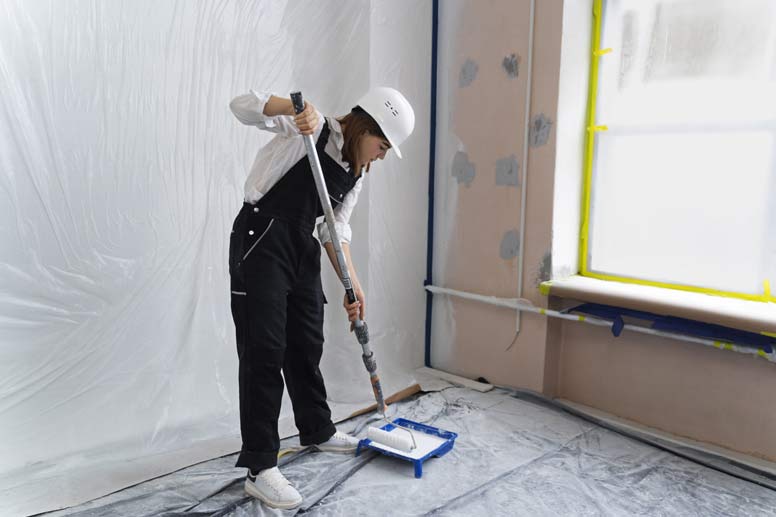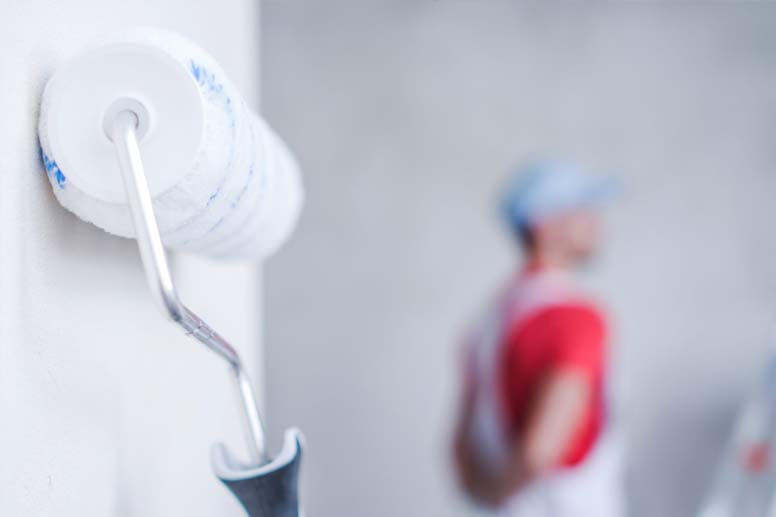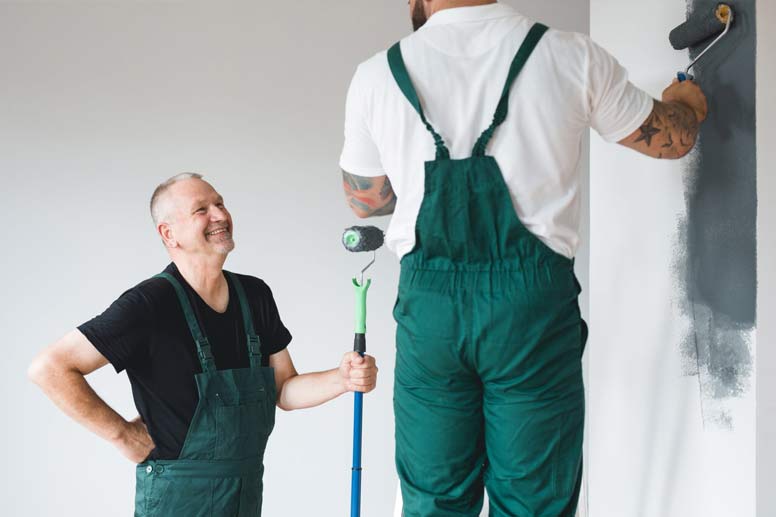How To Start Your Own Painting Business: Step-by-Step Guide

Table of Contents
- Understanding the Painting Industry
- Step 1: Research Your Market
- Step 2: Create a Solid Business Plan
- Step 3: Get Licensed and Insured
- Step 4: Buy the Right Tools
- Step 5: Set Your Prices
- Step 6: Market Your Business
- Step 7: Use Painting Contractor Software
- Step 8: Build a Strong Reputation
- Step 9: Plan for Growth
- Final Thoughts
Starting a painting business is more than just picking up a brush—it’s a chance to turn a valuable skill into a profitable career. The painting industry is booming, with the global market expected to grow to over $200 billion by 2030, driven by increasing demand for residential and commercial improvements.
Whether you’re dreaming of freshening up local homes, tackling large commercial projects, or launching a small side hustle, the possibilities are endless.
In this guide, we’ll walk you through everything you need to know to get started. From researching your market and pricing your services to marketing your business and scaling it for growth, you’ll find step-by-step advice to make your journey easier.
With some smart planning, quality tools, and a commitment to delivering great results, you’ll be ready to build a successful painting business in no time.
Understanding the Painting Industry
Before jumping into how to start a painting business, it’s helpful to understand just how strong the industry is right now. The global paints and coatings market is booming, with experts projecting it will grow from $217 billion in 2024 to over $303 billion by 2032—a steady annual growth rate of 4.5%.
In the U.S., the story is just as exciting. Sherwin-Williams, one of the biggest names in the game, recently reported $6.16 billion in sales for the third quarter of 2024, thanks to a jump in residential demand.
Their CEO mentioned how they’ve managed to grow sales and profits despite a few ups and downs in the market.
What does all this mean for you? People are spending on painting—whether it’s freshening up their homes or upgrading businesses—and there’s plenty of room for new entrepreneurs to step in. If you’ve been thinking about starting a small painting business, now is a fantastic time to make your move!

Step 1: Research Your Market
Every great business starts with knowing the market. Taking the time to research helps you figure out who your customers are, what they’re looking for, and how to tailor your services to meet their needs.
What’s Your Niche?
Decide who you want to serve. Will you focus on residential jobs, like helping homeowners repaint kitchens and bedrooms? Or would you rather tackle big commercial projects, like office buildings?
If you’re in a suburban area, families and homeowners may make up your primary market. In a city, property managers and commercial clients might be your best bet. Specializing can help you stand out.
John, a painter in Chicago, realized that many landlords in his area were struggling to keep up with tenant turnovers. He started marketing himself as the go-to guy for fast, affordable apartment repainting—and his business took off!
Understand Local Demand
Find out what’s trending in your area. Are people investing in modern color schemes or eco-friendly paints? Are there older homes in need of exterior updates? By staying informed, you can adapt your offerings to match the demand.
Set Realistic Expectations
Market research also helps you gauge what you can charge and how much work is available. For example, in high-demand areas, painters may charge premium rates and stay booked for months, while in smaller towns, pricing might need to be more competitive.

Step 2: Create a Solid Business Plan
A well-structured business plan serves as a roadmap for your painting business. It should outline your goals, target market, services offered, pricing strategy, marketing plan, and financial projections. A clear plan keeps you focused and helps when you’re applying for small business loans or pitching your services.
Write down:
- Your goals: Are you aiming for a small side hustle or a full-time business?
- Your services: Interior painting, exterior painting, or both?
- Your costs: Factor in tools, insurance, and marketing.
When Sarah launched her painting business in Austin, Texas, she had a clear goal: turn her side hustle into a full-time gig within two years. She decided to focus on interior residential painting, knowing it was in high demand. She listed her startup costs for tools, insurance, and marketing.
To attract clients, she leaned on social media and teamed up with local real estate agents. Her solid business plan not only kept her on track but also helped her get a small business loan. Just six months in, Sarah had built a steady stream of referrals, and was well on her way to making her dream a reality.
Tip! Use tools like the Estimate Generator to calculate accurate quotes for potential clients—this can even be included in your plan.
Try out our Estimate Generator
Use our free estimate generator to send professional estimates and win more jobs.
Step 3: Get Licensed and Insured
No matter where you live, you’ll likely need a license to operate legally. Research your local requirements to avoid fines or legal issues.
Don’t Forget Insurance!
Accidents happen, even to the best painters. Insurance protects you, your clients, and your employees.
The most common accidents include:
- Falls from Heights: Working on ladders or scaffolding presents a significant risk of falls, leading to serious injuries such as fractures or concussions.
- Chemical Exposure: Regular contact with paints, solvents, and other chemicals can cause respiratory issues, skin irritations, or long-term health problems if proper protective measures aren’t taken.
- Repetitive Strain Injuries: Continuous motions like brushing and rolling can lead to musculoskeletal disorders, affecting the wrists, shoulders, and back.
- Falling Objects: Handling heavy tools and equipment at heights increases the risk of items falling, potentially injuring the painter or others below.
- Electrical Hazards: Painting near electrical outlets or wiring without proper precautions can result in electric shocks.
- Slips, Trips, and Falls: Wet paint, dropped tools, and cluttered work areas can cause slips and trips, leading to injuries.
Imagine you’re painting a client’s living room, and a ladder scratches their expensive hardwood floors. General liability insurance would cover the repair costs—without it, you’d be paying out of pocket.
Step 4: Buy the Right Tools
Investing in good equipment saves you time and makes your work look more professional. You’ll need basics like brushes, rollers, and drop cloths, as well as items like ladders, paint sprayers, and safety gear.
Maria, a painter in Texas, saved time and money by tracking her expenses with a Receipt Scanner. She could quickly scan her receipts and keep her records organized for tax season.

Step 5: Set Your Prices
Pricing your services can feel tricky, but it doesn’t have to be. Calculate your costs—materials, labor, and overhead—and add a reasonable profit margin.
How Much Should You Charge?
- Interior painting often ranges from $1.50 to $3.50 per square foot.
- Exterior painting can cost $2 to $4 per square foot.
- Cabinet Painting typically ranges from $2,000 to $6,000 for an average-sized kitchen.
- Murals or Faux Finishes, artistic jobs can cost anywhere from $10 to $50 per square foot, depending on complexity.
Eric, a painter in Florida, noticed that many competitors were undercharging. He priced his services slightly higher but included extras like free color consultations. His clients appreciated the added value and were happy to pay a bit more.
Step 6: Market Your Business
Marketing doesn’t have to cost a fortune.
- Online Presence: Create a website that showcases your work and makes it easy for clients to contact you.
- Social Media: Post before-and-after photos on Instagram and Facebook to grab attention.
- Word of Mouth: Ask happy clients for referrals or reviews.
Kelly, a painter in Seattle, started a blog sharing DIY painting tips. Her posts brought traffic to her website and boosted her business.
Step 7: Use Painting Contractor Software
Running a painting business involves more than just painting. You’ll juggle invoices, estimates, client communication, and more. Tools like our Painting Contractor Software can simplify your workflow.
- Invoice Maker: Quickly create and send professional invoices.
- Time Tracker: Track hours for your team and projects.
- Client Portal: Precisely control invoices and payment status from all your clients.
Mark, a painter in Denver, used time tracking software to see how long each project took. This helped him adjust his pricing and estimate timelines more accurately.
Step 8: Build a Strong Reputation
Your reputation can make or break your business. Always aim to deliver exceptional service.
- Be punctual and professional.
- Use high-quality materials.
- Follow up with clients to ensure they’re happy.
Sarah, a painter in New York, always left small thank-you notes after finishing a job. This simple gesture delighted her clients and earned her glowing reviews.
Step 9: Plan for Growth
As your business grows, consider expanding your services or hiring employees. Look for ways to streamline operations and increase efficiency.
After a year of running his solo painting business, Jake in Phoenix hired two employees and invested in Estimate App to handle the increased demand. His revenue doubled within six months.

Final Thoughts
Starting a painting business is an exciting journey that can be both rewarding and profitable. It all begins with a little planning. Whether you’re exploring how to start a painting business, how to start a house painting business, or how to start a small painting business, research your local market, figure out what makes your services stand out, and create a simple business plan to guide you.
Getting licensed, insured, and investing in quality tools sets you up for success from day one. Don’t forget to focus on pricing your services fairly while showcasing the value you bring, like using premium materials or offering quick and reliable service.
As your house painting business grows, take time to build relationships with clients and promote yourself through social media, word-of-mouth, and a professional website. Every project you complete is an opportunity to showcase your skills and build a reputation that keeps customers coming back.
Starting small doesn’t mean thinking small—keep learning, adapting, and setting new goals to grow your business. With the right mindset and a commitment to quality, your painting business can thrive for years to come.
Remember tools like our Painting Contractor Software can help you manage your business efficiently, leaving you more time to focus on growth and delivering exceptional results.
Ready to take your painting business to the next level?
Download Invoice Fly today and set your business up for success!
